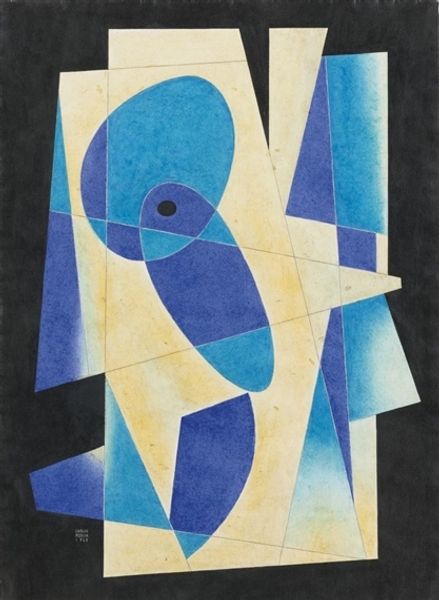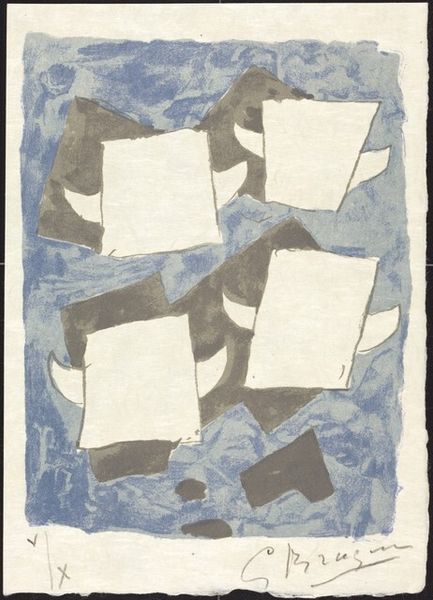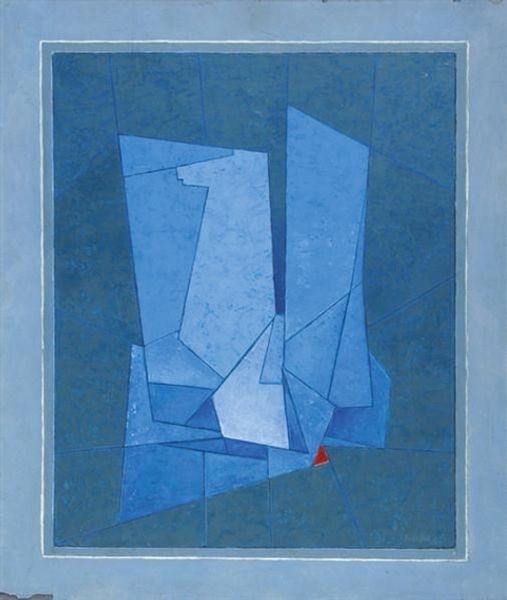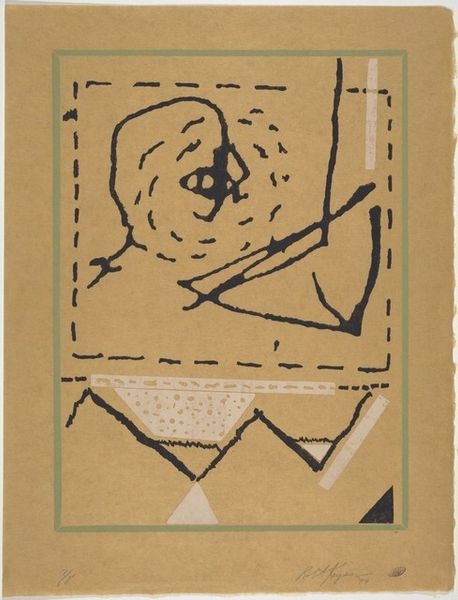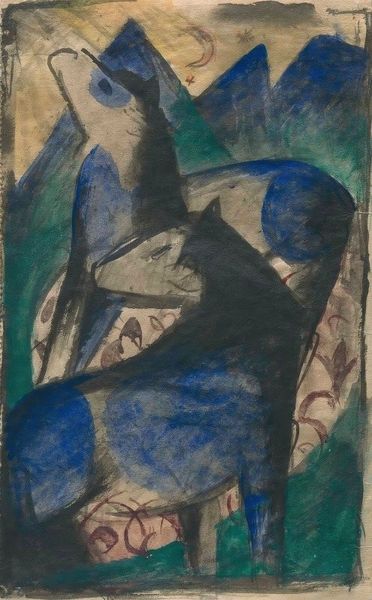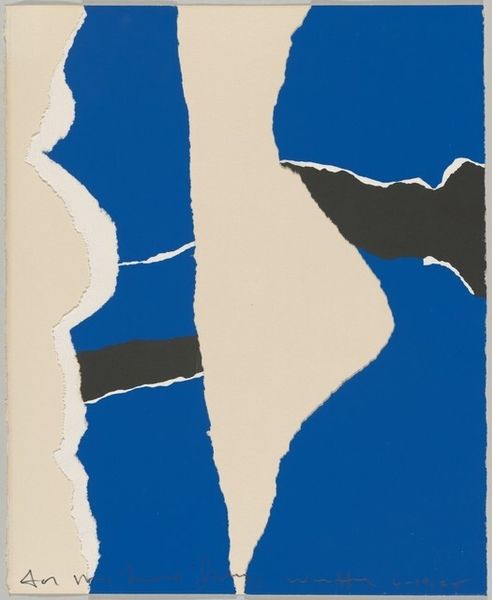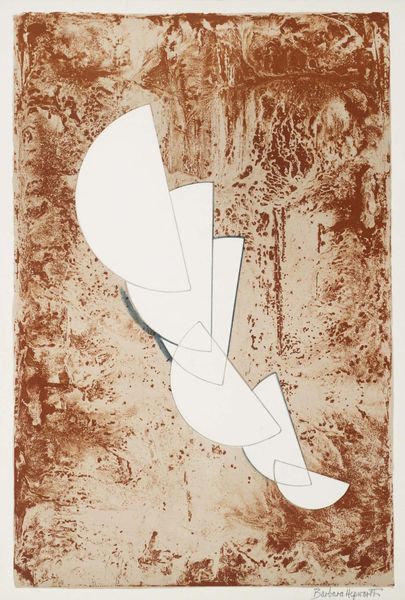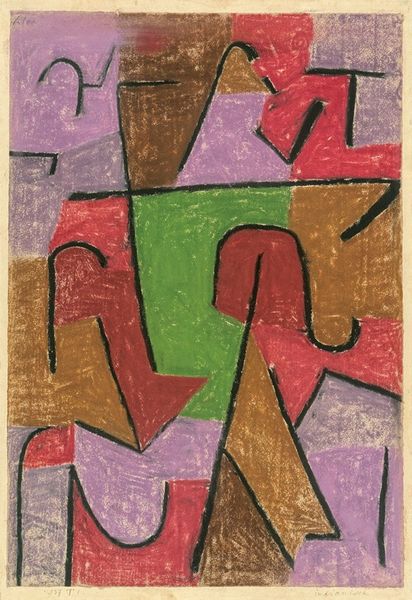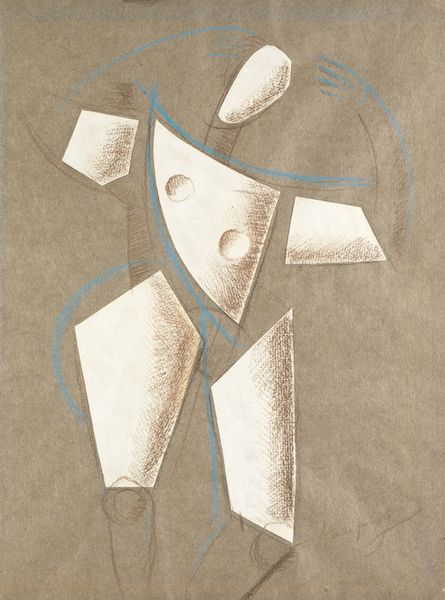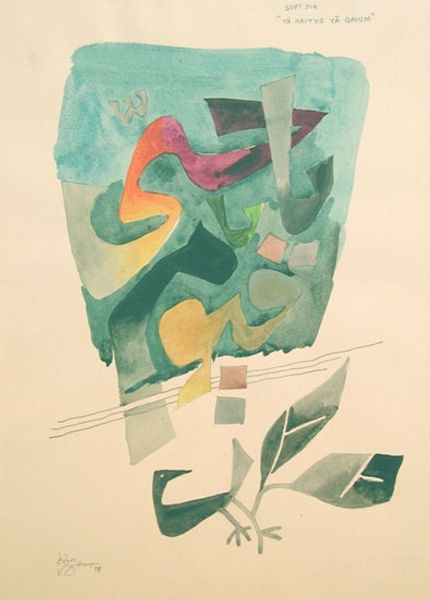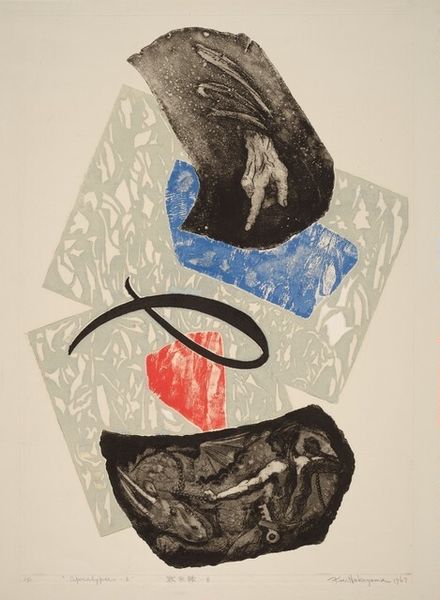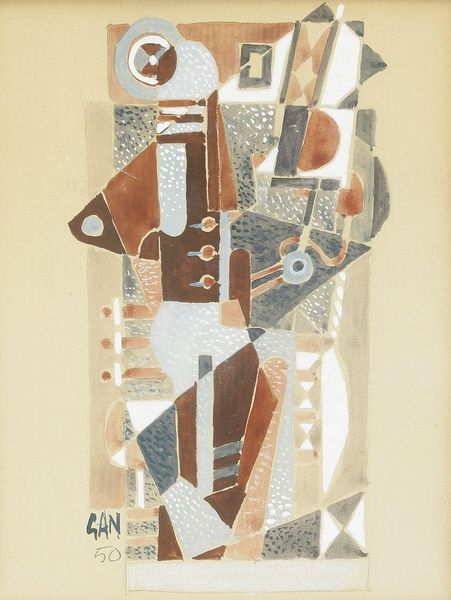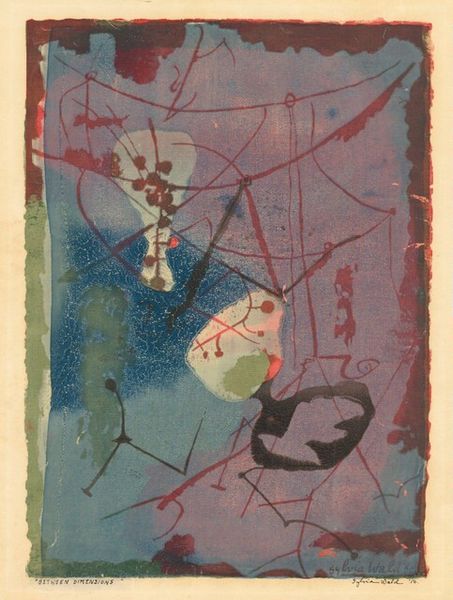
#
cubism
# print
#
geometric
#
abstraction
Dimensions: sheet: 31 × 23.3 cm (12 3/16 × 9 3/16 in.)
Copyright: National Gallery of Art: CC0 1.0
Curator: What grabs you first about this piece? For me, it’s like stumbling into a lucid dream. The shapes seem both familiar and otherworldly. Editor: It definitely evokes something dreamlike! Initially, the color palette hits me. It's muted and calm—those dusty blues and creams—like fading memories. Actually, I think it has a sadness in it. Curator: That melancholy connects interestingly with its title. This is an untitled print from "La Nuit la Faim," which translates to “The Night, the Hunger.” It was created in 1960 by Georges Braque. The collection in which it was featured addresses the themes of alienation, post-war anxiety, and, frankly, the quiet desperation of the human condition in the wake of existential uncertainties. Editor: Wow. I wouldn't have necessarily gleaned all of that just from looking. Seeing the playfulness in the forms almost disguised those deeper threads. The use of simplified, almost childlike shapes creates a kind of heartbreaking tension with what the piece explores at its core. Curator: Exactly. Braque’s earlier engagement with Cubism informs the abstraction here, but it’s been distilled. The overlapping geometric forms and fragmented planes challenge representational reality. What interests me is how this abstraction can become a poignant metaphor for personal and societal fragmentation after war, using geometric shape as the foundation for symbolic form. Editor: It feels very layered, metaphorically. I keep thinking of a child trying to make sense of chaos, assembling a puzzle with the wrong pieces. Like these biomorphic shapes floating—or falling—in this neutral space, reaching to make something. Curator: Absolutely. The work speaks to the intersectionality of the self, fractured by trauma but seeking coherence, even if that coherence is abstract. It is, perhaps, also an argument that something new emerges when everything is reshaped by necessity. It captures the poignancy and instability of reconstruction following moments of severe break. Editor: This piece is deceptively powerful. At first glance, a gentle study in color and form. Then it sinks its hooks into you, exploring some profound sense of disquiet, and a gentle yet relentless search for harmony. It does so much by doing so little. Curator: That it does, so eloquently. It invites us to confront those complex questions with an open heart and a critical mind.
Comments
No comments
Be the first to comment and join the conversation on the ultimate creative platform.
